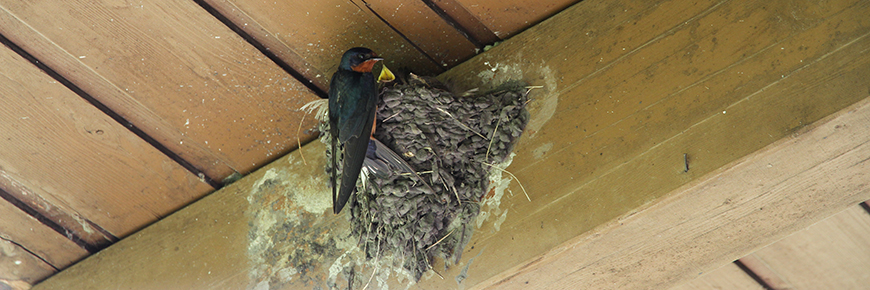Kids' wildest questions about the wild (part one)
At Parks Canada, we love wild questions—and kids love asking them. Here are a few that reveal a lot about the amazing life of nature (and the amazing imaginations of kids).
1. Do animals dream?

In humans, dreaming happens during a kind of sleep called REM (rapid eye movement). During REM sleep, your eyeballs are darting around under your closed eyelids.
Since most mammals and many birds experience REM sleep, scientists think they also have dreams of some kind.
The brain activity of sleeping animals certainly suggests dreaming. At night, some songbirds seem to be rehearsing the songs they heard during the day. Sometimes laboratory rats seem to re-run mazes during REM sleep.
What about those animals (like seals) that sleep both on land and in water? According to a recent study, northern fur seals experience little or no REM sleep in the water. It may be that seals save their dreaming for land.
- Seals are one of the ten animals you might see while visiting Canada’s national protected areas.
2. Can a slug jump?

A slug, jump? That’s like asking if it can dance!
But actually...
To avoid being eaten, the dromedary jumping-slug (pictured above) leaps and wriggles around in an “anti-predator dance.”
Slugs play an important role in ecosystems by providing food for birds, toads, beetles and rodents. The Pacific Coast is home to several species of jumping slug. Dromedary jumping-slugs, a species at risk, are found in Pacific Rim National Park Reserve.
3. What happens to frogs in winter?

Some frogs, impressively, freeze solid and then thaw out in spring. The wood frog is one such species.
Others, like the northern leopard frog, hibernate on river or lake bottoms. They slow their metabolism down but don’t freeze.
At Alberta’s Waterton Lakes National Park, staff are always glad to see the parks’ three species of frogs emerge in the spring. But they have a particular soft spot for the northern leopard frog.
A species at risk in western and northern Canada, the northern leopard frog disappeared from Waterton in the 1970s. In 2015, Parks Canada began collecting eggs of the frog from nearby Grasslands National Park to bring them to Waterton. Now the species is once again breeding in Waterton.
4. How many mouthfuls of mud does it take a barn swallow to build a nest?

A thousand, give or take a mouthful.
Barn swallows like to build their nests in human-made structures like houses, bridges, culverts and barns. The mud nests are lined with grass, hair and feathers.
The barn swallow is the most common swallow in the world, but it is still a species at risk in Canada. If you knock down or destroy a barn swallow nest, you are breaking the law.
5. Speaking of nests, do all birds build them?

No, some birds go for the camouflage approach.
In B.C.’s Gulf Islands National Park Reserve, the common nighthawk lays its eggs directly in beach sand. The eggs are hidden by their colour. The chicks, once hatched, also blend in with their environment.
But when invasive plants such as scotch broom and European beach grass take up all the shore space, common nighthawks have nowhere to nest. By removing the invasives, Parks Canada staff and volunteers are restoring habitat for the common nighthawk and other species at risk.
For more questions about nature, see Kids’ wildest questions about the wild (part two).
- Date modified :